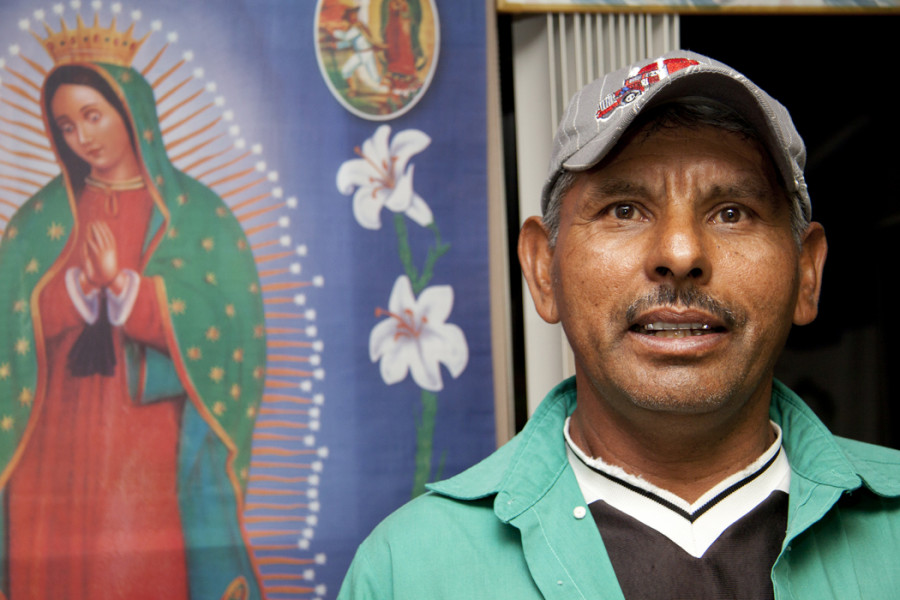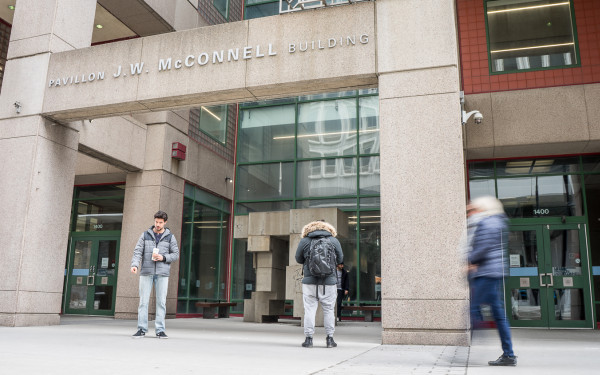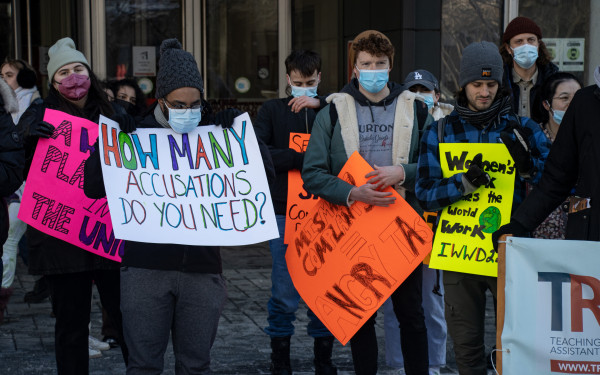“La Belle Saison” to Unionize
Rural Quebec’s Labour Cycle & Migrant Workers’ Rights Held in Unsteady Balance
St. Rémi has all the trappings of a small Québécois town.
Walking west down its thoroughfare, Notre-Dame St., you pass a fast-food joint, a depanneur and a bank before reaching the local church—a handsome, 170-year-old grey stone building with twin white spires. At this time of year, it’s rare to hear Spanish in the street, or spot a sombrero. But in a little over a month, that will change.
Each year, from late spring until early winter, the town of St. Rémi and its environs play host to thousands of seasonal migrant farm workers, mainly from Mexico and Guatemala. Most of them arrive in May to work in vegetable or berry farms during the belle saison, usually for a salary equal to or, if they’re lucky, slightly higher than minimum wage. Most come to Canada to provide for their family back home, to whom they send remittances before returning to their country of origin sometime between October and December. It’s a cycle that seems to define life in St. Rémi.
Just a stone’s throw away from the church, on the top floor of a nondescript two-storey building that also houses a music school and a bar, is the office of the support centre for migrant farm workers. The centre is funded and co-managed by United Food and Commercial Workers, one of the largest private sector labour unions in Canada, and its subsidiary, the Agricultural Workers’ Alliance. UFCW, which goes by its French acronym TUAC in Quebec, and AWA run a total of 10 support centers across Canada, including two in Quebec, based in St. Rémi and St. Eustache.

The centre’s mission is to help temporary workers adjust to life in Canada, explained Rachel Heap-Lalonde and Dagoberto Acevedo, two former employees of the centre. In the growing season, employees of the St. Rémi centre lead outreach efforts to inform workers of their rights as well as intervene in labour disputes. However, even with legitimate grievances, not all workers feel comfortable using the centre’s services for fear of being fired, Heap-Lalonde said.
In the off-season, the centre is usually closed, except for Thursday evenings and Sunday mornings when someone is there to answer phone calls and take drop-in appointments. At the foot of the staircase leading up to the centre’s entrance is a drop box beside a handwritten sign saying, “Depositar sus documentos.”
Although things are relatively slow at the centre for now, its coordinator, Marie-Jeanne Vandoorne, is bracing herself for what could be one of the most difficult and significant growing seasons in her five-year career in Saint-Rémi.
Embroiled in a protracted and costly lawsuit with Wal-Mart, UFCW is planning to cut down on other expenses this year, Vandoorne explained. For the centre in St. Rémi, that will mean continuing to make due with Vandoorne as their one full-time employee this summer instead of their usual staff of two or three.
In an office decorated with flags of Mexico and Guatemala, photographs of farm workers and old newspaper clippings, Vandoorne’s desk is hidden under stacks of documents. She is the only person directly responsible for managing roughly 1,000 dossiers on local migrant farm workers, as well as answering any phone inquiries.
This could also prove to be a very significant year for migrant farm workers and support centres in Quebec in another respect. The latest turn in a complicated five-year legal battle over seasonal migrant farm workers’ right to unionize came on March 11, when the Quebec Superior Court upheld an earlier decision by the Commission des relations du travail, which effectively gives temporary workers on farms the right to form or join a union. The ruling renders inoperative a section of the Quebec Labour Code that had previously prevented workers on farms with fewer than three permanent employees from being able to unionize.
The court’s judgment states that the contentious section of the Code represented a “significant hindrance on their [seasonal agricultural workers’] ability to exercise their fundamental right of freedom of association.”
But Vandoorne isn’t celebrating just yet, though, since the decision can still be appealed.

“We’re crossing our fingers and we’ll see what will happen next. But in the meantime, there are people who have lost hope and others who haven’t yet,” she said.
Still, she hasn’t lost faith in migrant workers’ fight for collective bargaining rights.
“Me? Of course I haven’t lost hope!” she said with a smile. “If I had, I wouldn’t be here.
“I feel like they should all have the right to unionize—if not in the same form as enterprises open all year, then in a form adapted to the workers,” she continued.
Ask Vandoorne or former employees of the support centre at St. Rémi about the working conditions for migrants on nearby farms, and they will tell you a few stories worthy of a Steinbeck novel.
“A lot of the time, the workers are afraid of their supervisors,” said Rachel Heap-Lalonde, who worked at the centre for eight months last year. “We’ve had many cases of workers who were beaten with 2×4s.”
She mentioned one extreme example in which a Guatemalan picker on a local strawberry farm came to the centre to complain that his supervisor had threatened him and his family back home.
“He would say, ‘You work faster,’ or ‘You shut your mouth—because I know where your family lives,” Heap-Lalonde said, retelling the migrant worker’s story at a talk held at Concordia’s food co-op, the People’s Potato, two weeks ago. Lalonde hastened to add that not all seasonal migrant workers are mistreated by their employers.
“There are a lot of good farmers. We’ve heard of a lot of farmers who look out for their workers,” she said.
Jill Hanley, an associate professor at McGill’s School of Social Work whose research focus includes labour rights and immigration issues, said some of the most common problems facing migrant farm workers are “low salary, less contract security, poor housing conditions, poor health and safety.”
“It’s not to say all these employers are bad employers—but when they are bad, it’s hard to do anything about it,” she continued.
Hanley argued that migrant farm workers are left vulnerable by flaws in the design of the Temporary Foreign Workers’ Program. “The overall structure of the program keeps these workers in conditions that the average Canadian wouldn’t accept,” she said.
Citizenship and Immigration Canada, which administers the Temporary Foreign Workers’ Program with Human Resources and Development Canada, did not respond to phone or email requests for comment in time for print.

For Hanley, the main problem with the program is that it bars these workers’ access to permanent residency. Even migrant farm workers who return to Canada year after year are not given any pathway to residency and eventual citizenship.
“There’s a permanent demand for this kind of work. […] I find it really discriminatory to say that we only want this category of worker temporarily and not permanently,” she said.
Although their official status reads “temporary,” migrant farm workers are regular fixtures in St. Rémi, and Vandoorne says she’s looking forward to their return. According to her, the St. Rémi’s atmosphere changes completely when the workers arrive.
“It’s way more fun. The town just comes alive,” she said.
In June, usually on Father’s Day, the centre organizes a party for the workers—many of whom are fathers themselves separated from their families—complete with Mexican and Guatemalan food, music and dancing. At the end of the season, they host another blowout, called the Fiesta de la culture, which coincides with the championship game of their weekly soccer league. A couple months later, they move back home leaving a sedate St-Rémi behind.
That is, until the cycle repeats itself the following spring.


_600_832_s.png)

_600_375_90_s_c1.jpg)


